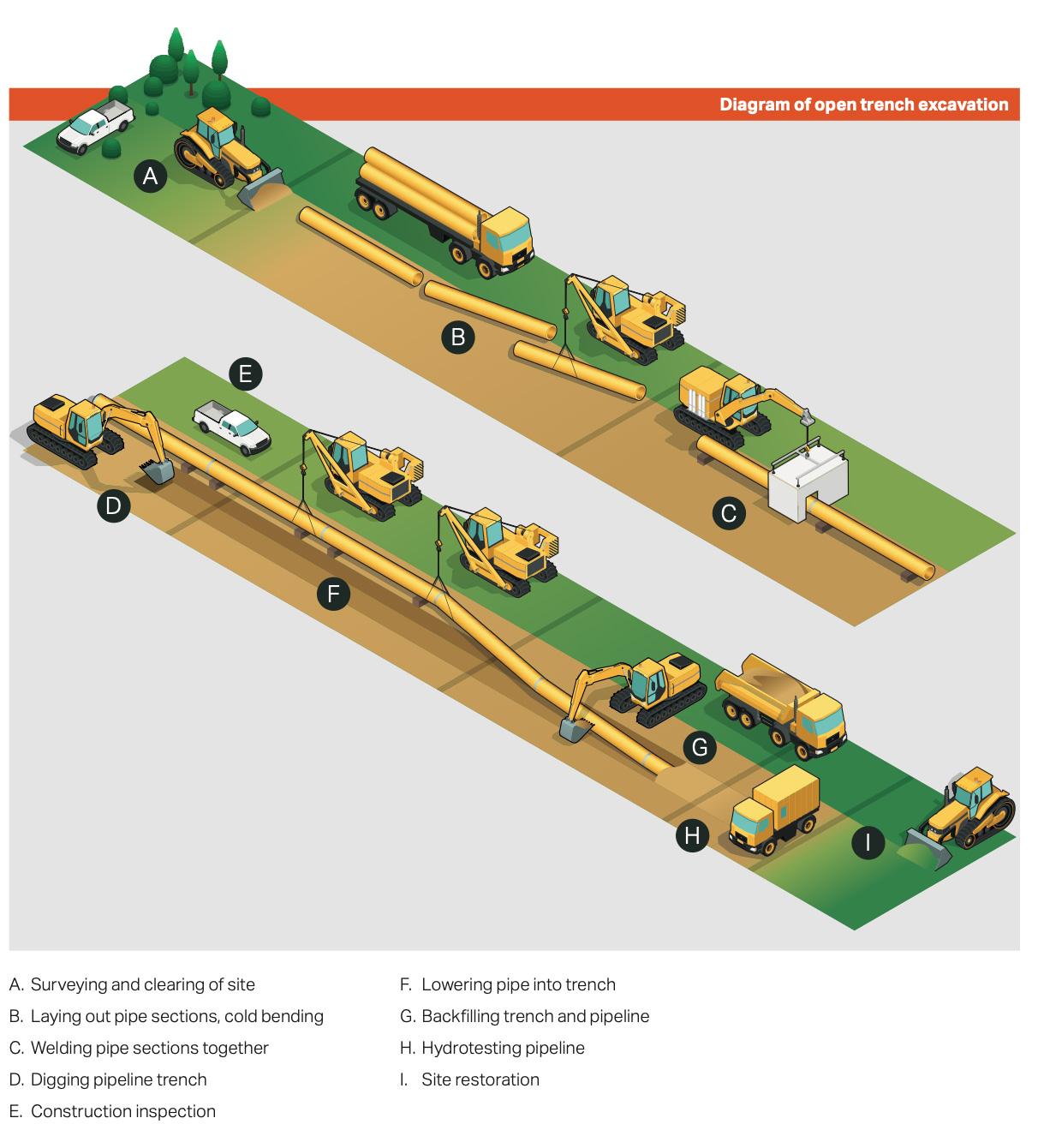The construction process
Cadent is an experienced and trusted operator of gas pipelines. We will bring our extensive expertise of constructing, operating and maintaining the existing gas network to this project.
The pipeline would be constructed predominantly using open trench (or ‘open cut’) techniques. Where it is not possible or practical to use open trench pipeline construction trenchless crossing techniques will be used. This is likely to be to cross existing infrastructure like roads, railways and waterways.
We will build the pipeline in stages and our construction activities are likely to move around, which means we won’t be working across the whole development area for the entire three years it will take to build the pipeline.
Once the Project has been constructed, the pipeline will be buried underground. Only the above ground infrastructure (HAGIs and BVIs) will remain visible.

Trenchless methods (for roads, rivers, other utilities, and rail) In some cases, for engineering and environmental reasons, open trench methods are not viable so trenchless methods will be considered.
We’ll need to use trenchless methods at various points along the pipeline route to cross major roads, such as the M56, M62, M6 and watercourses like the River Weaver Navigation, River Mersey and Trent and Mersey Canal. The locations we expect to use trenchless methods are shown on our interactive map. For more information on the trenchless crossings we think we’ll need, please see the Draft Environmental Statement.

Temporary construction areas
At certain points along the route we will require temporary construction areas. These locations will allow us access to build the pipeline and HAGIs.
Temporary construction areas are likely to include:
- Secure fencing.
- Hard surfacing and drainage.
- Welfare facilities.
- Site offices to safely administer the works.
- Vehicle/plant storage and associated fuels.
- Storage for pipes in stacks, equipment and materials.
- Lighting.
Once the pipeline has been constructed, the temporary construction compounds would be removed and land reinstated to its former condition.
HAGIs would be operational 24 hours a day, unmanned. They would generally be monitored and operated remotely from an Energy Control Centre located off-site.
Maintenance
A schedule of maintenance would take place, typically including short planned periods of maintenance, and pipeline inspections every one to five years. Pipeline inspections would include running an inspection tool through the pipeline from one HAGI to the next.
The pipeline itself will be monitored both remotely and from publicly accessible vantage points by the Cadent Operations teams on a regular basis to educate and prevent persons damaging the pipeline through 3rd party activities. This is a standard process which occurs on all our natural gas pipelines at this scale by Cadent and other pipeline operators here in the UK.
Traffic and Construction routes
Temporary access routes are required to transport the equipment, materials and people we need to construct the pipeline. We have made some changes to the temporary access routes we plan to use following the last consultation.
- Most construction vehicles and almost all HGVs previously planned to use Eaton Lane are now proposed to access the working area from the A533 instead.
- The Covershaw Lane access route in Trafford has been removed as it is unsuitable for large vehicles.
- Carrgreen Lane in Trafford is to be used with single way operations due to its restricted width.
- The B5356 east of Appleton Thorn in Warrington is no longer proposed to be used to avoid an environmental weight restriction.
- The A57 Manchester Road is no longer proposed to be used for access from the M6 into Warrington.
- Grimsditch Lane in Warrington Borough is no longer proposed to be used as an access route.
You can view the proposed transport access routes on the interactive map.